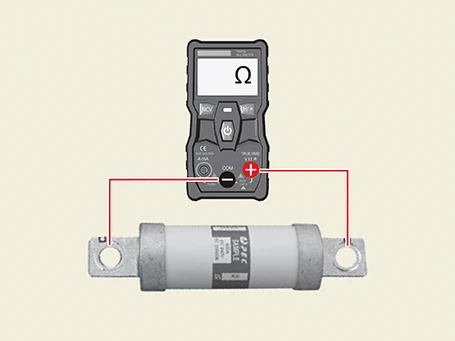Specification
| Item | Specification |
| Resistance (Ω) | 1.0 or below [20°C (68°F)] |
Component
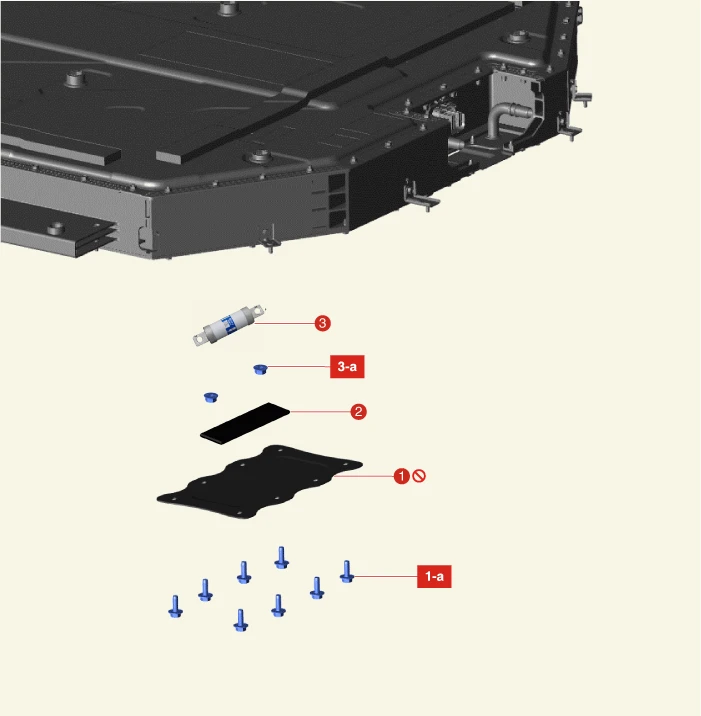
1. Service Cover
1-a. 1st : 8.8 N·m (0.9 kgf·m, 6.5 lb·ft)
1-a. 2nd : 10.8 N·m (1.1 kgf·m, 8.0 lb·ft)
2. Main Fuse Cover
3. Main Fuse
3-a. 15.7 - 16.7 N·m (1.6 - 1.7 kgf·m, 11.6 - 12.3 lb·ft)
Description
The main fuse protects the high voltage and high voltage circuit from the over current.
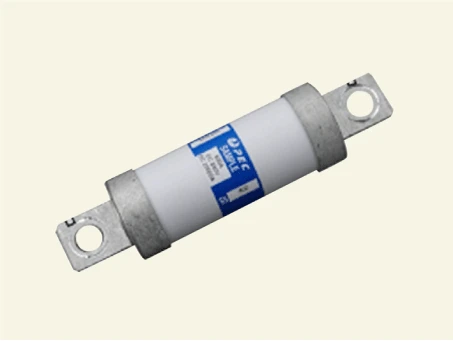
Removal

• When working on high voltage system, the work should be performed by technicians who have completed the relevant training. A lack of understanding of the high voltage system can lead to serious accidents due to electric shock or electric leakage.
• When working on high voltage system or related components, make sure that you are familiar and comply with the "Safety Precautions, Cautions and Warnings." If you do not comply with the instructions, serious accidents due to electric shock or leakage may occur.
• When working on high voltage system, make sure to check the Personal Protective Equipment (PPE) and high voltage shut-off procedures.
1.If the DTC code occurs as below, Do not replace the main fuse.
| DTC | |
| P0AA600 | Hybrid/EV Battery Voltage System Isolation Fault |
| P0AA700 | Hybrid/EV Battery Voltage Isolation Sensor Circuit |
| P1AA600 | Hybrid/EV Battery Abnormal Performance Detection |
| P1B2500 | High Voltage Path Fault (Inverter Cap. & HV Battery Voltage Deviation) |
| P1B7600 | High Voltage Relay Fault |
| P1B7700 | Inverter Capacitor Precharging Fault |
2.Shut off the high voltage circuit.(Refer to Battery Control System (Long Range) - "High Voltage Shut-off Procedures")
3.Remove the main fuse service cover (A).
Tightening torque1st : 8.8 N·m (0.9 kgf·m, 6.5 lb·ft)2nd : 10.8 N·m (1.1 kgf·m, 8.0 lb·ft)
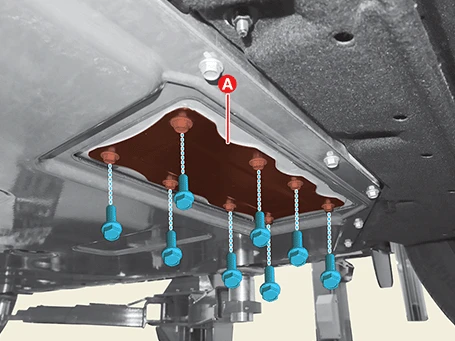
4.Remove the main fuse cover (A).
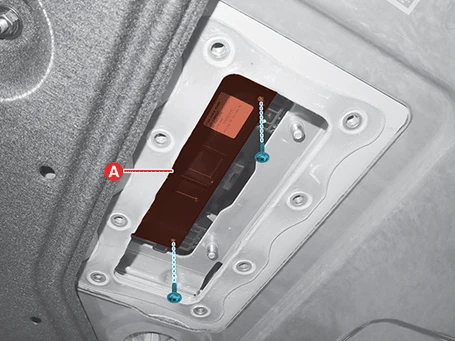
5.Remove the main fuse (A).
Tightening torque :15.7 - 16.7 N·m (1.6 - 1.7 kgf·m, 11.6 - 12.3 lb·ft)
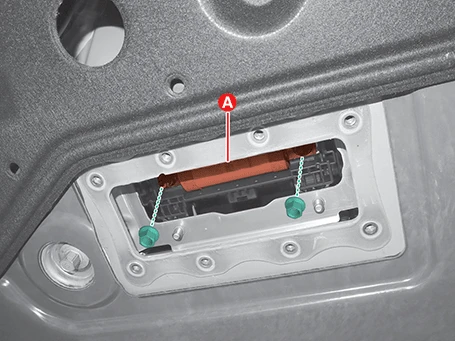
Installation

• When working on high voltage system, the work should be performed by technicians who have completed the relevant training. A lack of understanding of the high voltage system can lead to serious accidents due to electric shock or electric leakage.
• When working on high voltage system or related components, make sure that you are familiar and comply with the "Safety Precautions, Cautions and Warnings." If you do not comply with the instructions, serious accidents due to electric shock or leakage may occur.
• When working on high voltage system, make sure to check the Personal Protective Equipment (PPE) and high voltage shut-off procedures.
1.Install in the reverse order of removal.

• Install the main fuse to the specified torque.
• If the main fuse is dropped, it may cause internal damage. (Do not reuse)
• Install the service cover after completely removing existing tape on the battery side to prevent the air leakage.
• The service cover should be replaced with a new one. (Do not reuse)
2.Perform the air tightness inspection with the KDS.(Refer to High Voltage Battery System - "Air Tightness Inspection")
Inspection

• When working on high voltage system, the work should be performed by technicians who have completed the relevant training. A lack of understanding of the high voltage system can lead to serious accidents due to electric shock or electric leakage.
• When working on high voltage system or related components, make sure that you are familiar and comply with the "Safety Precautions, Cautions and Warnings." If you do not comply with the instructions, serious accidents due to electric shock or leakage may occur.
• When working on high voltage system, make sure to check the Personal Protective Equipment (PPE) and high voltage shut-off procedures.
1.Remove the main fuse.(Refer to Main Fuse - "Removal and Installation")
2.Measure the main fuse resistance.
Normal (Ω) : 1.0 or below [20°C (68°F)]
